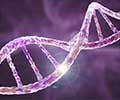Scientists have discovered a gene mutation linked with several types of cancer also may be responsible for a rare but debilitating brain tumor called papillary craniopharyngioma.

Craniopharyngiomas arise at the base of the skull adjacent to the pituitary gland, the hypothalamus and other critical brain structures. Although they are not inherently aggressive tumors, because of their location they can significantly compromise vision and other neurologic and endocrine functions. The tumors cling to brain structures, usually making surgical removal challenging, and radiation therapy can cause vascular abnormalities or other tumors.
There are two subtypes of craniopharyngiomas – adamantinomatous tumors, which are more common in children, and papillary tumors, usually seen in adults. Recent studies have associated mutations in an oncogene called CTNNB1 with adamantinomatous tumors, but prior to this study, no information was available about the molecular drivers of the papillary subtype. In their search for possible mutations associated with papillary tumors, the research team first performed whole exome sequencing of 15 craniopharyngiomas – 12 adamantinomatous and 3 papillary. Among adamantinomatous tumors the previously identified CTNNB1 mutation was found in 11 of the 12 samples; and for the first time, the known tumor-associated BRAF mutation was identified in all three papillary tumors.
The researchers followed that finding with a targeted genotyping of tumor samples from an additional 95 patients. Among tested papillary tumors, 94 percent had the BRAF mutation, while 96 percent of the adamantinomatous tumors had the CTNNB1 mutation. The investigators also confirmed that both types of tumors had very few other mutations and that the BRAF or CTNNB1 mutations were present in all tumor cells, suggesting they occurred early in tumor development.
"There are currently no medical therapies available for craniopharyngiomas, but potent compounds that block BRAF signaling are in hand. So we are very hopeful that these targeted therapies can drastically alter the management of these tumors," says Sandro Santagata, MD, PhD, BWH Department of Pathology and a co-corresponding author of the Nature Genetics paper. "Inhibitors of the signaling pathway controlled by CTNNB1 that are currently in clinical trials should be investigated for adamantinomatous tumors, and we're planning to evaluate the BRAF inhibitors that have had promising results against melanoma for treatment of papillary craniopharyngiomas."
Source-Eurekalert















